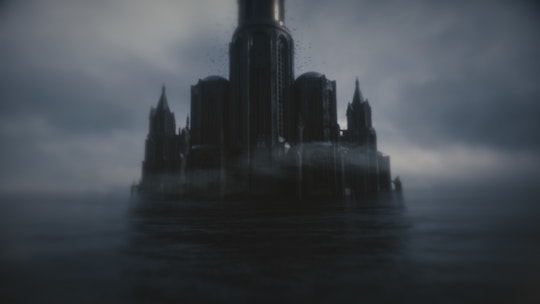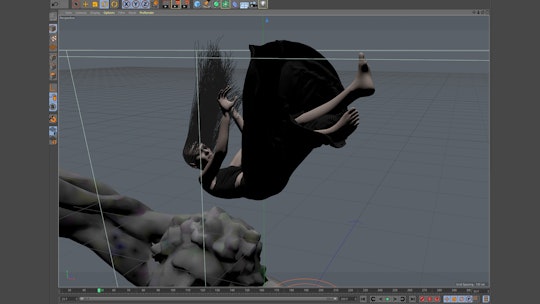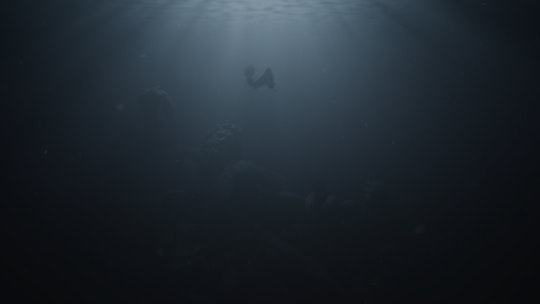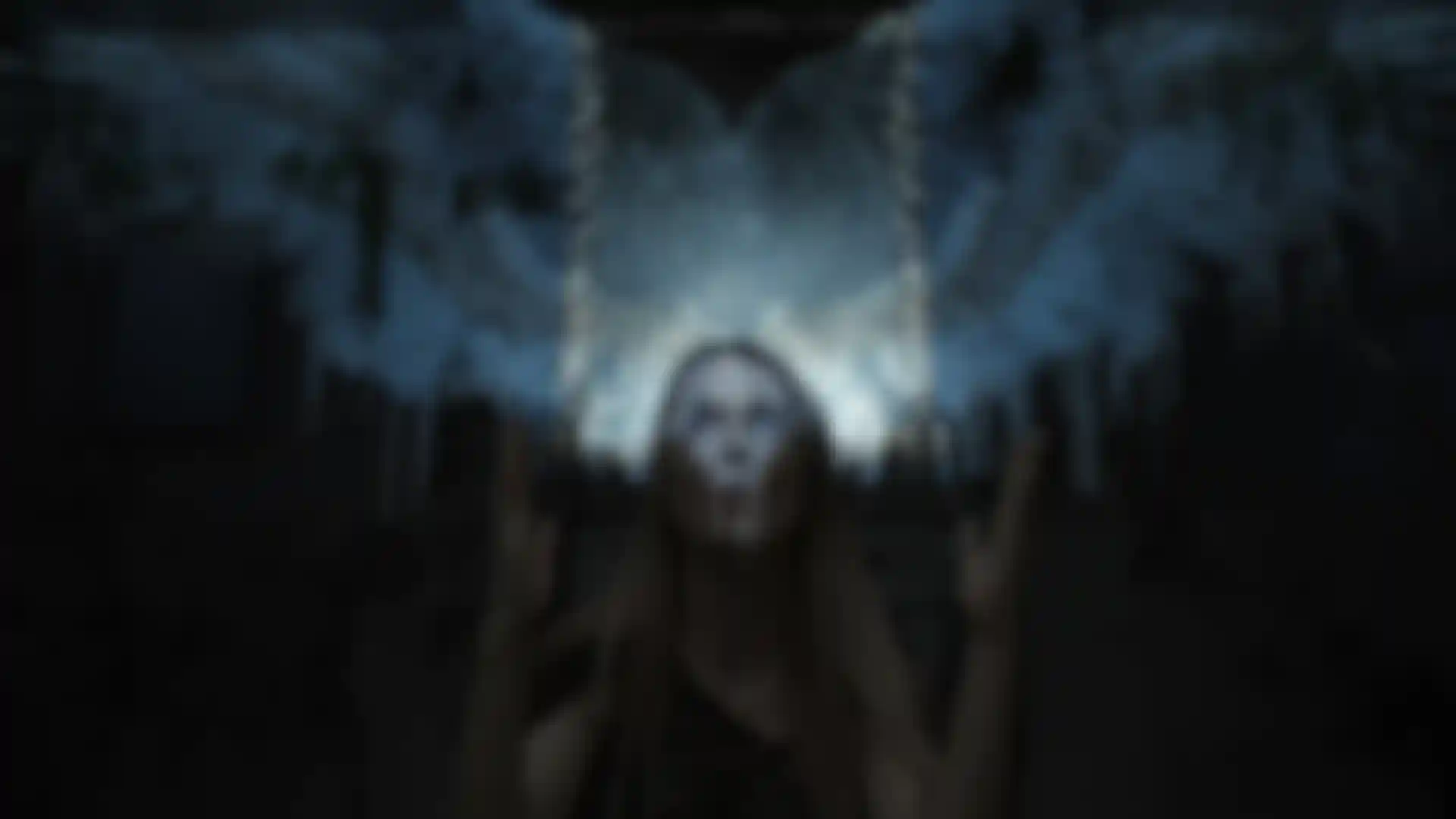
Creating a Prog Rock Fantasy World in C4D Chris Lavelle offers a behind-the-scenes look at the making of the music video for ILLUMINAE’s track “Blood on Your Hands.”
Epic imagery comes fast and furious in “Blood on Your Hands,” the debut music video from the London-based prog rock band ILLUMINAE. From the opening tracking shot rushing toward a dark castle to the climactic montage at a cathedral, the video perfectly complements the song’s symphonic arrangements and evocative melodies.
Produced and directed by motion designer Chris Lavelle, the video was shot over five hours on green screen, and it was Lavelle’s job to build all of the elaborate sets and worlds using Cinema 4D, After Effects X-Particles and Premiere Pro. Think medieval armies tearing across craggy landscapes as monuments collapse around them, or massive, Inception-inspired sets that serve as metaphors for the human mind. “It’s probably obsessive,” Lavelle admits. “But I like someone being able to stop the video at any point and have a great image. I don’t like filler material.
A Passion for Motion Design
Lavelle has worked for decades as a graphic designer, but his passion for motion design grew as he worked toward a degree in multimedia and graphic design at Sunderland University. While still in school, Lavelle began filling a trophy shelf with plaudits, including an Adobe Design Achievement award for a music video called “The Turn of the Screw” and a regional award from the Royal Television Society.

Though he learned motion design in Maya, he later switched to Cinema 4D and, today, he leverages C4D, X-Particles and Octane in a pipeline that gets ideas out of his brain and onto the screen as fast as possible. “C4D is my go-to for everything because it’s all about ideas and how fast you can imagine those ideas before they disappear. Using Octane with Cinema I get immediate feedback, and I can build whatever I need so I can see if it’s going to work really quickly,” he says.
Despite all the positive attention, Lavelle still considers his motion design work a hobby. And that mindset has helped him control his own destiny to some extent, rather than having to chase jobs all the time. Lavelle liked working with ILLUMINAE, a duo made up of Ian Jones from the British band Karnataka and former solo artist Agnieszka Świta, because they respected his creative process and had faith in his abilities. “I took the job because they gave me that latitude, and their trust was very important to me,” he says.
A Look Behind the Scenes
The concept behind the video involved a kind of religious fervor—a madness that overtakes people’s judgment and influences their actions. Lavelle developed storyboards around a broad story arc and pitched it to the band. Their thoughts pushed the idea in many different directions that all of them were happy with. “My first idea wasn’t necessarily the best idea,” Lavelle recalls. “The story sprung from that kernel of an idea and grew organically, pushed by the creativity of the band and their vision.
The live-action shoot took place over the course of a single day at Sunderland University, which let Lavelle use their media center for a day. He filmed six hours of green-screen footage with Jones and Świta, matching the storyboards he had prepared and envisioning a dreamy-looking video. “I quite like that because it’s not supposed to be real. It’s a whole mindscape,” he says.
When possible, Lavelle prefers to composite scenes in Cinema 4D rather than rendering out and compositing in After Effects. As an example, he points to a surreal shot in the video where a water surface seems to be pushing down from the ceiling toward Świta. “I find that if you take green-screen footage into C4D for compositing and rendering, you get a much more natural feel,” he explains. “It’s the tools I use that help me organically improve the narrative as I go through the process.”
In one particularly challenging sequence, Świta falls from a tower into the sea and the camera plunges underwater to follow her. In the shot, the singer is actually a 3D model wearing a dress made using C4D’s Cloth and Hair. Lavelle manipulated the dynamics until they looked like they were flowing underwater and the bubbles emanating from the model were generated in X-Particles.
One of the largest-scale scenes in the video only appears on screen for a few seconds as the camera tracks over the heads of medieval knights in a melee. In the background, a classical statue hundreds of feet tall falls to the ground and crumbles. Lavelle animated the knights in combat and used Voronoi fractures to destroy a statue model he purchased from Sketchfab. Though it took nearly five days to complete, the scene is only on screen for under 10 seconds.
The Benefits of Creative Freedom
Lavelle’s favorite scene also goes by in the flash. Świta is briefly seen crawling through a hallway before the image twists out of view, replaced by another hallway and then another. Jones, her bandmate, can also be seen in one of the corridors. Lavelle got the idea for the twisting hallways from a tutorial and replicated the effect in C4D. He composited the footage in C4D as well, so it looks like she’s crawling across that corridor.
As the video nears its conclusion, Świta strides toward daylight through a dark temple filled with red-cowled figures. As the camera moves past one of the congregants, we see a twisted mass of thick wire where a human’s face would be. For Lavelle, the striking look, which relies on a ray bounce effect in C4D, has become a trademark.
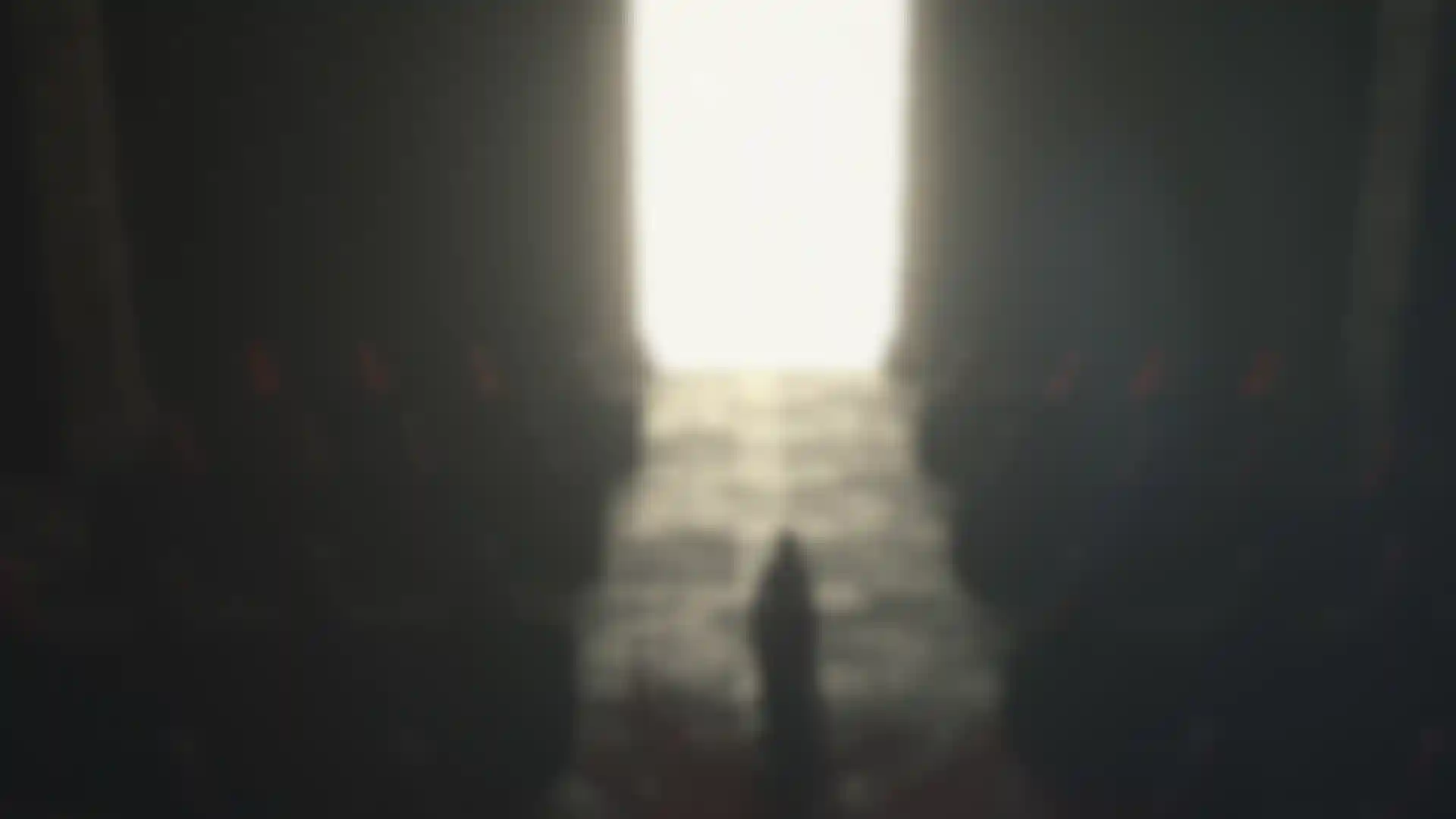
“It’s a nod to my early work that I put in all my videos,” he says, explaining that when you put a ray bounce inside an object, you set off rays that bounce around the inside of the model creating splines. “They go around and around and around and, suddenly, you’ve got this sculptured mess of wires. I love it and I use it all the time.”
The ability to collaborate with other artists, while still enjoying creative freedom, is one of the key things that keeps Lavelle interested in taking on side projects alongside his full-time work in graphic design. “I want to do something creative without the restrictions and pressure of a traditional client,” he says. “The music industry is great for that because the people you’re working with are also creatives. And for them to trust me to represent their precious material makes everything worthwhile.”
